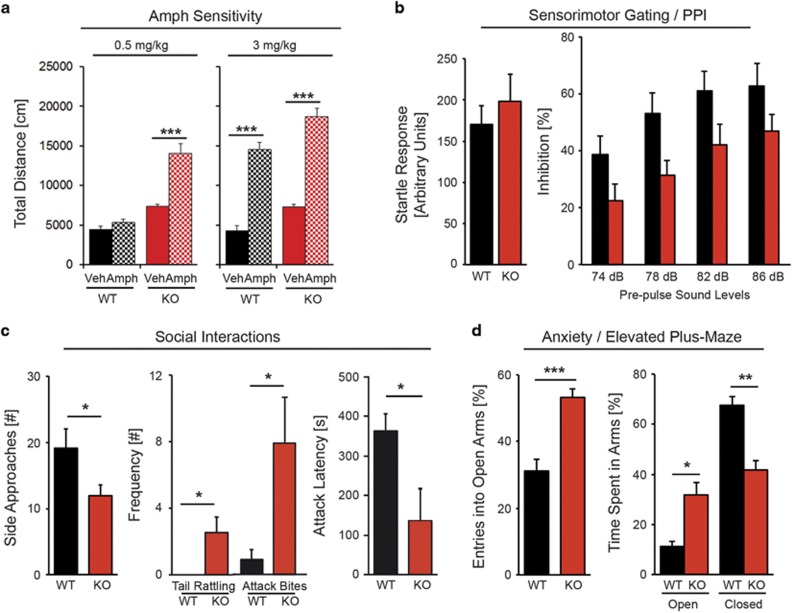Figure 4.
NRG2 mutant mice exhibit numerous behavioral deficits associated with endophenotypes in psychiatric disorders. (a) Both control (black) and NRG2 KO (red) habituated mice display increased motor activity in response to 3.0 mg kg−1 (i.p., right panels) of Amph (checkered), relative to vehicle-injected mice (solid color), whereas only NRG2 KOs exhibited hyperactivity following a subthreshold dose 0.5 mg kg−1 of Amph (left panels; n=10 per genotype; one-way ANOVA). (b) Startle responses (left) are similar in adult NRG2 KO and littermate control mice. PPI, measured at 74, 78, 82 and 86 dB prepulse stimulus intensities (right), is reduced in NRG2 KO mice (n=15–19 per genotype; repeated two-way ANOVA). (c) NRG2 KO mice display abnormal social interactions in the resident intruder task characterized by a reduced number of side approaches (left), and increased aggressiveness manifesting as increased frequency of tail rattling (middle) and attack bites, and decreased latency to attack (right; n=12–13 per genotype; Student's t-test). (d) NRG2 KO mice exhibit reduced anxiety-like behavior in the elevated plus maze, entering more often (left) and spending more time (right) in the open arms than control littermates. Entries into the open arms are shown as a percentage of all entries, and time spent in the open arms is plotted as a percentage of the total observation time; time spent in the middle is not shown (n=6–8 per genotype; Student's t-test). Results represent the mean±s.e.m.; *P<0.05, **P<0.005 and ***P<0.0005. KO, knockout; WT, wild-type.

